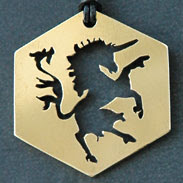Part 2 begins with forming the prepared ingot from part 1 into the ring band stock.
 |
| Ingot After First Hammering Session |
 |
| Second Hammering Increases Length - still too thick |
With most torch work I quench the piece in water for a quick cool down but never with forged rings. With forged rings the slow cool down of the silver is very important. It has to do with keeping the molecular structure that is created through the heating and hammering process. As I said I have never been formally trained in forging so I don't really know all of the specifics but I do know if the silver is quenched at any point it ends up being annealed. Annealing is a process of heating and quenching metal to make it softer. That would make all of the hammering done to the silver a complete waste of time in about 30 seconds.
 |
| Third Hammering Continues to Increase Length & Thin Band |
After the silver ingot has been hammered into the right width and thickness for a band it is time to cut the silver to the proper length for a ring. I will state here that the "right" width and thickness for the bands is not a precise measurement. All of this work is being done by hand and not a machine so the thickness and width does vary slightly from ring to ring. I try to keep these variances below 1 mm though by comparing the hammered metal to 18 gauge sheet sterling and comparing it to other rings I have made that are 3/16" wide.
 | |
| Fourth & Final Hammering - The band is ready to be cut |
Part 3 will be posted on Friday 11/1/13






Oh my! That seems a very long and laborious process. It really involves lots of pounding. And this made me appreciate jewelry maker even more.
ReplyDeleteWhiteLightProductions.com
Hi Jelly,
ReplyDeleteThank you for your comment. Yes, torch forging is a laborious process and I haven't even posted the final steps yet! There are two more posts yet to come with the final steps and then the mishaps while making these rings.